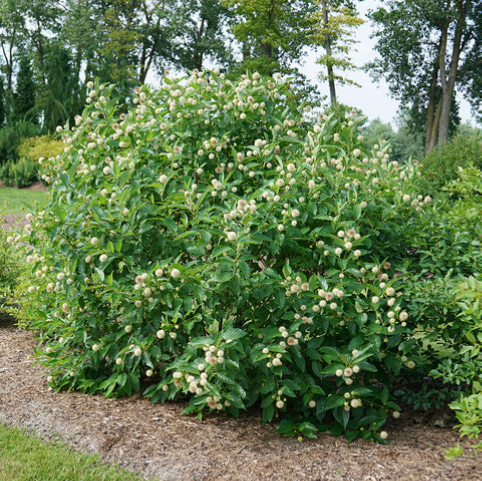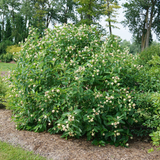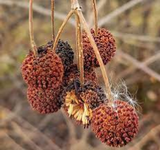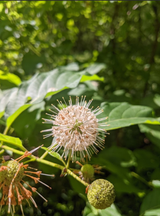- 2024 Native Trees
- >
- Shrubs
- >
- Buttonbush (Cephalanthus occidentalis)
Buttonbush (Cephalanthus occidentalis)
Height: 5 to 12 feet
Spread: 4 to 8 feet
Bloom Time: June
Bloom Description: White
Sun: Full sun to part shade
Water: Medium to Wet
Maintenance: Low
Suggested Use: Pollinator
Attracts: Birds, Butterflies, Hummingbirds
Tolerate: Drought, Clay Soil, Erosion
Native to: Jefferson County
If you are looking for a little midsummer encouragement the Buttonbush will bring the pom-poms to cheer you on.
This low maintenance shrub is a plant it and forget it type shrub; however, it is hard to forget the Buttonbush when it explodes with quite unique flowers in the summer. So beautiful and amazing are the flowers that Covid-19 tried to rip off its shape.
A slightly course shrub, Buttonbush grows in unfavorable conditions with an open and rounded habit. Buttonbush are great to plant in naturalized areas or along the perimeter of the landscape. The plant can tolerate some abuse and still vigorously recover. While it can grow in a variety of light, the plant best performs in full sun.
Tiny, tubular, 5-lobed, fragrant white flowers appear in dense, spherical, long-stalked flower heads (to 1.5” diameter) in early to mid-summer. Long, projecting styles give the flower heads a distinctively pincushion-like appearance. Flower heads are very attractive to hummingbirds, butterflies, and other insect pollinators.
The flowers give way to seeds that are quite favored by Wood Ducks. Spring peepers and Wood Frogs are none to reside around the shrub. Hummingbirds love the plant for its rich nectar, and are also known to nest within the protection of the leaves of the shrub. The Buttonbush is a host plant for 24 species of butterflies and moths. Additionally, when in bloom the shrub is alive with the buzzing of native bees , bumblebees, and butterflies and skippers.
Philadelphia nurseryman Bernard McMahon listed it as “Swamp button-wood” in the appendix of his book, The American Gardener’s Calendar, 1806. ■






